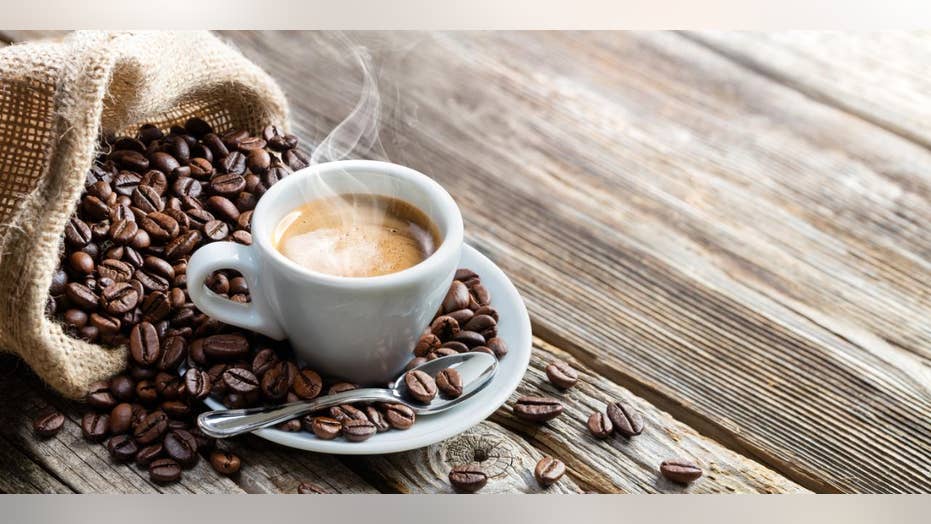
The espresso drink as we know it today, dates back to 1947, when Gaggia introduced the first equipment capable of creating consistent high pressure throughout the shot pulling. The equipment was called Gaggia Crema Caffe and was designed for business usage. Prior To the Gaggia Crema Caffe nearly every commercial and consumer espresso equipment was vapor driven, comparable to the modern day moka pot maker.
Full story here - what is special about espresso roast
Espresso is a full-bodied, strong coffee drink. The standard offering, a shot, is made by pushing pressurized hot water through finely ground coffee beans.
Espresso has a thicker consistency than coffee prepared by various other brewing techniques. It has a higher concentration of suspended and dissolved solids and crema.
Espresso has all of the same flavors of coffee but intensified-- bitter, lightly sweet, acidic, toasty. The precise flavor profile will differ depending on the coffee roast. It has a thicker, creamier appearance than regular coffee.
Espresso isn't an unique coffee bean, although roasters might have an unique process for beans predestined to become espresso. As a matter of fact, roasters may prefer to work with premium robusta beans to add an added kick of caffeine.
Espresso or Expresso-- Utilize the Right Name
The spelling expresso is mostly considered wrong, though some sources call it a less common version. Italy uses the term espresso, substituting s for a lot of x letters in Latin-root words; x is not considered part of the typical Italian alphabet. Italian individuals generally describe it simply as caffè (coffee), espresso being the common coffee to get; in Spain, while coffee shop expreso is seen as the more "formal" denomination, café solo (alone, without milk) is the common means to ask for it when at an espresso bar.
Espresso Preparation
Espresso is prepared by pressing hot water through a layer of compressed ground coffee, contained in a port-filter. Pulling a shot of espresso calls for training and knowledge, take a look at our espresso brewing guide, for a thorough tutorial.
When it boils down to it, the prep work of espresso is what actually sets it apart. Various other methods of brewing take some time because they rely on the slow filtering of hot water through your coffee grounds. This means more minutes in between you and a fresh mug of coffee.
Espresso machines pressurize and push near-boiling water through finely-ground coffee beans loaded into a coffee cake. This method offers you a complex, aromatic, and caffeine-packed shot of coffee in under thirty seconds.
When brewed correctly, the espresso under the crema will have a distinct, rich taste, velvety mouthfeel, and aromatic scent. The shorter duration of water exposure extracts less acid than other brewing methods while still preserving 60% to 70% of the caffeine in the last cup.
So despite the fact that espresso takes just 30 secs to brew, it still supplies a substantial quantity of caffeine. The procedure also conserves a lot more subtle and aromatic coffee oils that you will not find in your regular cup of coffee.
Caffeine Content in Espresso Coffee
While espresso has the reputation of being high in caffeine, it all depends on how much you consume. Because the beverage tends to be served in smaller portions than typical coffee, it can in some cases end up having less caffeine than standard, made coffee. Triple and double shot drinks and mixed drinks like red-eyes can up the caffeine degree considerably.
Espresso has 29 to 100 milligrams of caffeine in a single shot, frequently hovering around 75 milligrams. A double shot contains 58 to 185 mg. For contrast, a mug of drip coffee can have 80 to 200 mg of caffeine depending on the variety and brewing technique.
Espresso has all of the same aromas of coffee but magnified-- bitter, mildly sweet, acidic, toasty. Italian individuals typically refer to it simply as caffè (coffee), espresso being the normal coffee to order; in Spain, while café expreso is seen as the more "formal" term, café solo (alone, without milk ) is the normal way to ask for it when at an espresso bar.
Espresso coffee is prepared by forcing hot water through a layer of compressed ground coffee, had in a port-filter. Espresso is an extremely strong coffee, with a lot of aroma, flavor, and body. Making a shot of espresso calls for training and expertise, take a look at our espresso brewing guide, for an extensive tutorial.